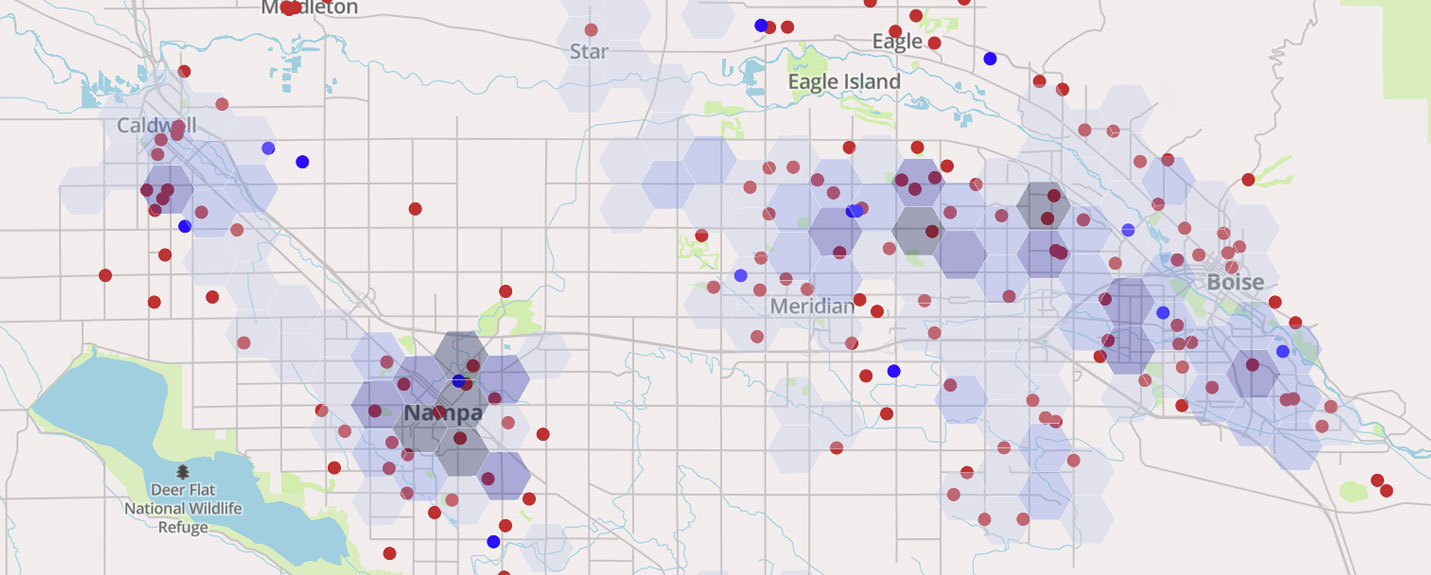
Treasure Valley School Expansion Must Be Smart, Targeted
This Post First Appeared In Idaho Press-Tribune | By Terry Ryan & Angel Gonzalez
The Treasure Valley is one of the country’s fastest-growing regions. Those of us who live here see evidence of this in new construction, traffic jams and long lines at our favorite grocery stores and coffee shops.
The Treasure Valley is one of the country’s fastest-growing regions. Those of us who live here see evidence of this in new construction, traffic jams and long lines at our favorite grocery stores and coffee shops.
Since 2000, the school-aged population in the Treasure Valley has increased by 39 percent. Just since 2010, Treasure Valley Schools have added 12,000 new students, and the region is expected to add another 3,400 students by 2019. These students attend a range of schools, from district buildings to charter public schools to private schools. All three sectors are seeing growth.
As area educators know all too well, the growth in this student population comes with both challenges and opportunities. Fact is that the growth of students from lower-income families is much faster than those from wealthier homes. It is projected that over the next five years there will be a net increase of 9,000 households in the region earning less than $50,000 a year; half of those earning less than $25,000.
In order to better understand these trends, what they might mean for new school development in the Treasure Valley and how to manage them smartly, we asked researchers at ECONorthwest to put together their new report, “Treasure in the Valley: Demographic Changes and New School Opportunities.” Specifically, we wanted the research team to help us and others across the valley: understand near-term trends in changing demographics of school-age children for Ada and Canyon counties; identify “hot spots” in development and where demand for new school services may be greatest; discuss school quality in these growth areas — how many students are attending low-performing schools or could benefit from different school options; and discuss how the changing student demographics might be served by new school options.
We felt that if we could get insights into these questions, we would have a better sense of where future schools in the Treasure Valley should be built, and who should build them. This is important to us because we work with the J.A. and Kathryn Albertson Family Foundation in their efforts to create 20,000 new high-performing school seats in Idaho by 2024. In fact, over the last two years we have worked with the Nampa School District, a variety of charter public schools and private schools to plan and launch new school efforts.
Moving forward, we want to make sure that any new school expansion we support or encourage (be it district, charter public or private) are in areas where the need is greatest, and that the schools are actually providing programs and opportunities that meet the needs of their unique student population. The goal here is not just to house students but to elevate the quality of education available to them.
Matthew Kitchen, the lead author of Treasure in the Valley, explains the importance of this work when he writes: “The future of the valley economy depends on successfully preparing tomorrow’s workforce by educating today’s youth. Idaho’s school systems get below-average marks for student achievement, school finance, support for teachers and other indicators of a healthy education environment. And in the face of low graduation rates and district fiscal challenges, many Idaho students and families are seeking enrollment in schools of choice — district public, charter public and private schools that offer families education options outside of those bound by their neighborhood. Waiting lists for many of the highest quality choices for parents and students, and to drive innovation across the education sector.”
Treasure in the Valley aims to help local education leaders, community leaders, business and philanthropy support wiser and more strategic investments in new schools. But it also breaks new ground by using empirical data across two of the nation’s fastest-growing counties to site schools based on the learning needs of changing communities and their children.
A new, high-performing school targeted at “hot spots” of student growth and educational need can make a sizeable difference for not only a community’s families and children, but also to the long-term economic and civic health of the community.
Read The Full Report: Treasure In The Valley
—
Have something to say? Find us on Facebook and Twitter to share your comments!




